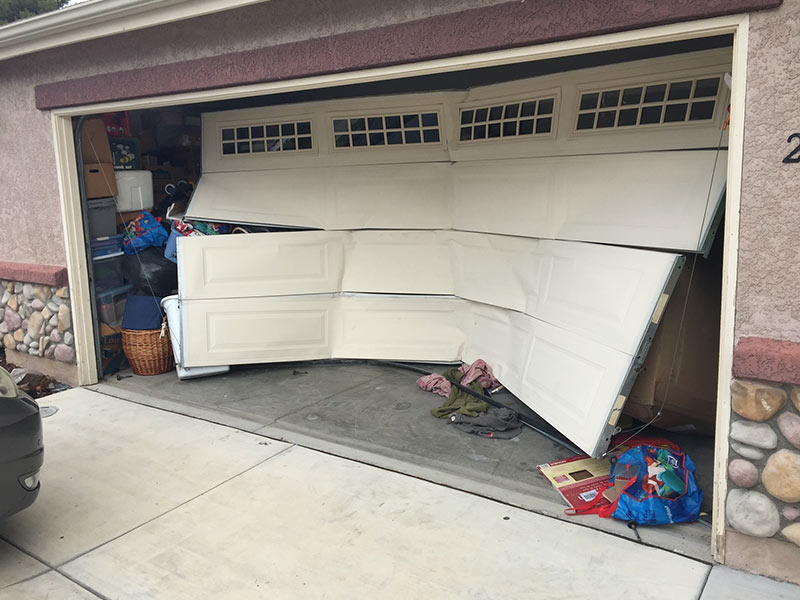Usual Garage Door Issues and How to Repair Them
Garage doors are essential for both safety and comfort, yet they commonly offer a selection of usual concerns that can frustrate home owners. While some concerns may appear uncomplicated to fix, others might require a much more nuanced understanding of garage door auto mechanics.
Noisy Garage Door Procedure
A noisy garage door operation can be a substantial resource of aggravation for home owners, commonly suggesting underlying mechanical concerns. Such interruptions might come from various reasons, including worn-out rollers, loosened equipment, or inadequate lubrication. Determining the source of the noise is important for effective resolution.
Over time, these elements can deteriorate, leading to grinding or squealing audios as the door steps. Furthermore, loose bolts or screws in the door mechanism can produce rattling noises throughout procedure.
Another adding factor is inadequate lubrication of the door's relocating components. Using a premium lube to the tracks, springs, and rollers can significantly diminish friction and noise. Home owners should execute this maintenance periodically to preserve ideal efficiency.
Last but not least, the garage door opener might also generate noise because of its age or mechanical problems. If the sound lingers regardless of dealing with other elements, getting in touch with a professional for an extensive assessment and possible repair work may be needed.
Door Will Not Open Up or Shut
Experiencing a garage door that will not open or close can be exceptionally irritating and often indicates a breakdown within the system. A number of aspects can add to this concern, and identifying the source is crucial for effective resolution.

Next, inspect the safety and security sensing units located at the base of the door. These sensors can come to be misaligned or obstructed by particles, stopping the door from operating properly. Clean the sensors with a soft towel and ensure they are aligned.
Furthermore, the garage door's internal components must be assessed. Concerns such as a damaged springtime, worn-out rollers, or a harmed opener can impede activity. If any parts seem harmed, it may be a good idea to seek advice from a specialist for repairs.
Misaligned Tracks
(High-Quality Standards)Misaligned tracks can significantly interrupt the smooth operation of a garage door, causing functional failures such as unequal motion or total immobilization. This concern typically occurs because of a range of elements, including wear and tear, accidental influences, or inappropriate installment. When the tracks are misaligned, the rollers can not relocate openly, which not just stresses the motor however additionally poses safety and security risks.
If you observe any disparities, it is vital to address the concern quickly. Meticulously tap the track back right into its appropriate placement using a rubber club or a similar tool, guaranteeing it is straight and level.
Normal maintenance, including cleansing the tracks and ensuring rollers are in good condition, can protect against future imbalances. By dealing with misaligned tracks immediately, you can recover the functionality of your garage door and enhance its durability.
Broken Springs
Amongst the numerous parts of a garage door system, broken springs are among one of the most usual concerns that can considerably hamper its capability. Garage door springtimes are crucial for balancing the weight of the door, permitting smooth opening and closing. When a spring breaks, it can cause a door that is hard to run or, in many cases, completely inoperable.
There are two major sorts of springs: torsion springs, which are installed above the door, and extension springs, found on either side. Signs of a broken spring include a door that won't open up, a noticeable void in the spring, or a loud sound throughout procedure. Trying to operate a garage door with a damaged spring can cause further damage to the door or the opener.
Repairing broken springs is not a DIY project; it requires specialized tools and know-how because of the high stress entailed. It is suggested to consult a specialist service technician that can securely replace the springtimes and make sure the door is appropriately stabilized. Normal upkeep and examinations can aid protect against springtime failures and extend the life expectancy of the garage door system.
Remote Issues

If the remote still falls short to run, check the garage door opener to guarantee that its sensors are clean and unobstructed. Dust, particles, or imbalance may hinder the signal transmission in between the remote and the opener.
Disturbance from various other digital tools can additionally hamper remote performance. Guarantee that nearby tools, such as cordless routers or cordless phones, are not triggering disruptions. garage door service. If interference is believed, attempt moving these tools additionally away from the garage door opener
In some situations, the remote may require to be reprogrammed. Get in touch with the maker's guidelines to reset the remote control and integrate it with the garage door opener. If all else falls short and the remote proceeds to malfunction, consider consulting a specialist specialist for a complete evaluation and potential substitute of the remote or opener.
Final Thought
(Convenient Access)In recap, typical garage door troubles can dramatically impact functionality and safety. Aggressive upkeep and prompt fixings can Affordable Excellence make certain optimum efficiency and long life of garage doors.